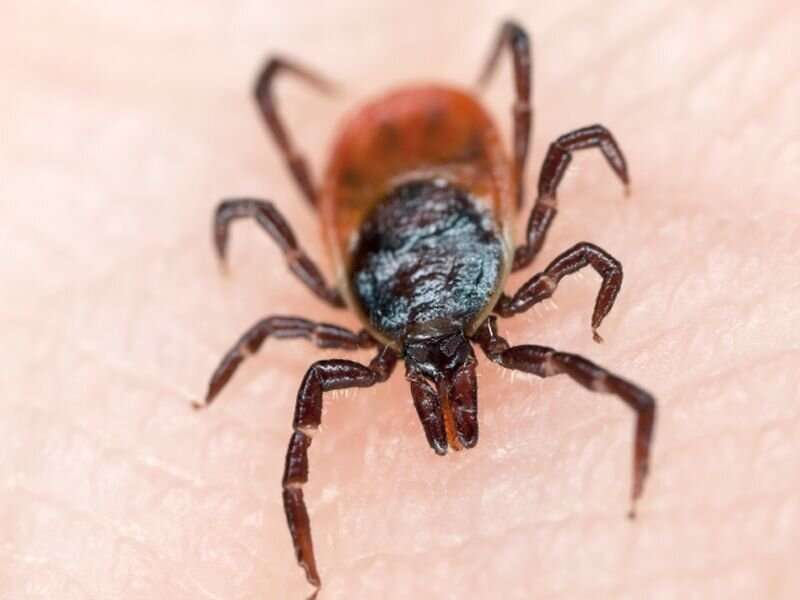This article has been reviewed according to Science X's editorial process and policies. Editors have highlighted the following attributes while ensuring the content's credibility:
fact-checked
peer-reviewed publication
reputable news agency
proofread
Ticks can take a licking from really tough weather

Ticks are extremely resilient even when temperatures vary wildly, according to scientists who are working to better understand the spread of Lyme disease.
In their new study, black-legged ticks, notorious for carrying pathogens, were very good at surviving both extreme cold and high heat, the scientists found. This was true both for nymph and adult ticks. Only larval ticks were more affected by weather conditions.
"We thought we would see some evidence that if there was like a very dry period, all the ticks might be at a greater risk of dying," said lead study author Jesse Brunner, an associate professor of biological sciences at Washington State University, in Pullman. "However, just the larvae were impacted by heat and dry conditions. Cold weather had even less of an impact. Somehow, they hunker down and survive great."
For the study, Brunner and a team of collaborators from the Cary Institute of Ecosystem Studies set up a large field study at three military bases along the U.S. East Coast using funding from the U.S. Department of Defense.
The researchers placed more than 9,000 ticks in soil core enclosures, monitoring their survival over a three-year period and collecting data on the ticks' response to climate conditions.
The extreme weather did make ticks go through their food more quickly. This means that the window for ticks looking for a new food host could be shorter with hotter weather. For tick larvae, this was especially true, according to the study.
But at the same time, median survival times for larvae were almost cut in half when exposed to frequent periods of hot and dry weather.
The soil core enclosures also gave the researchers information on something else impacting ticks. While in one container about 80% of the ticks had survived, all the ticks died just a few meters away. It's not certain why this happened, but it suggests that environmental factors such as arthropods or fungi played a role.
The findings were published recently in the journal Ecological Monographs.
In recent years, ticks have expanded where they live significantly across the eastern United States and the Midwest, which may be due to climate change.
The findings emphasize the importance of targeting the pests during the larvae stage, because this is when ticks are the most vulnerable, the study team noted.
The researchers hope to develop effective strategies, such as vaccinating host species to resist ticks, to limit the spread of disease.
"The ultimate goal is to develop a comprehensive framework that can predict and effectively manage tick populations," Brunner said in a university news release. "This could, in turn, lead to improved public health outcomes."
More information: The U.S. Centers for Disease Control and Prevention has more on Lyme disease.
Jesse L. Brunner et al, Off‐host survival of blacklegged ticks in eastern N orth A merica: A multistage, multiyear, multisite study, Ecological Monographs (2023). DOI: 10.1002/ecm.1572
Copyright © 2023 HealthDay. All rights reserved.



















